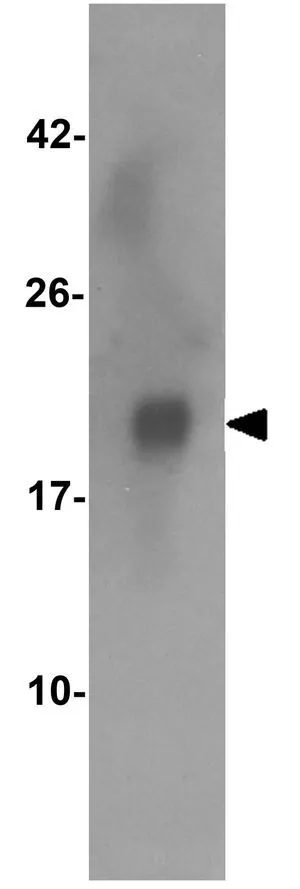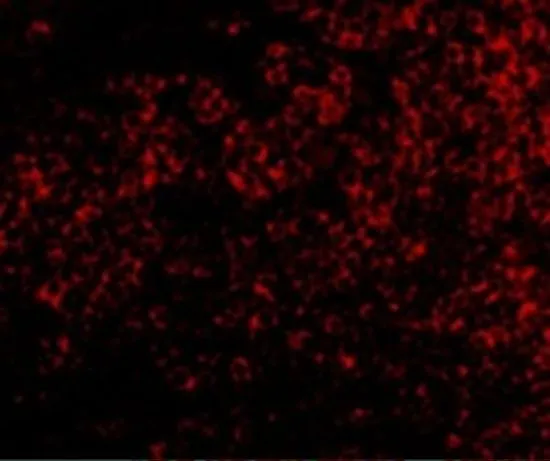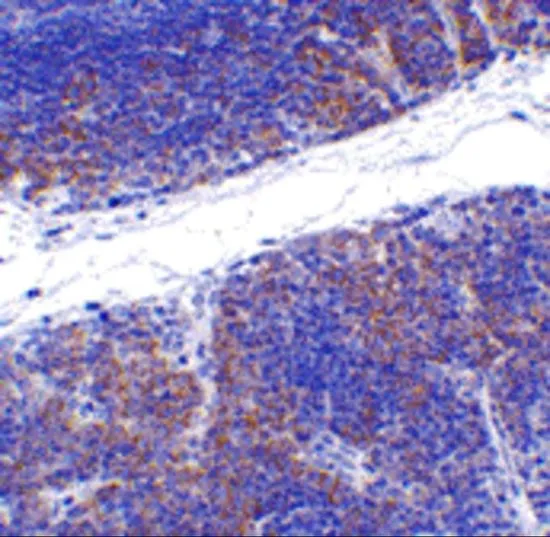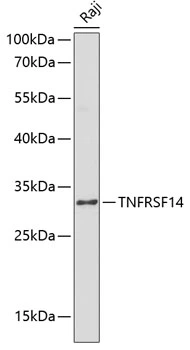
WB analysis of 125 ng TNFRSF14 recombinant protein using GTX31297 TNFRSF14 antibody. Working concentration : 1 microg/ml
TNFRSF14 antibody
GTX31297
ApplicationsWestern Blot, ELISA, ImmunoHistoChemistry, ImmunoHistoChemistry Paraffin
Product group Antibodies
TargetTNFRSF14
Overview
- SupplierGeneTex
- Product NameTNFRSF14 antibody
- Delivery Days Customer9
- Application Supplier NoteWB: 1 - 2 microg/mL. IHC-P: 1 microg/mL. *Optimal dilutions/concentrations should be determined by the researcher.Not tested in other applications.
- ApplicationsWestern Blot, ELISA, ImmunoHistoChemistry, ImmunoHistoChemistry Paraffin
- CertificationResearch Use Only
- ClonalityPolyclonal
- Concentration1 mg/ml
- ConjugateUnconjugated
- Gene ID8764
- Target nameTNFRSF14
- Target descriptionTNF receptor superfamily member 14
- Target synonymsATAR, CD270, HVEA, HVEM, LIGHTR, TR2, tumor necrosis factor receptor superfamily member 14, CD40-like protein, herpes virus entry mediator A, tumor necrosis factor receptor superfamily, member 14 (herpesvirus entry mediator), tumor necrosis factor receptor-like gene2
- HostRabbit
- IsotypeIgG
- Protein IDQ92956
- Protein NameTumor necrosis factor receptor superfamily member 14
- Scientific DescriptionThe protein encoded by this gene is a member of the TNF-receptor superfamily. This receptor was identified as a cellular mediator of herpes simplex virus (HSV) entry. Binding of HSV viral envelope glycoprotein D (gD) to this receptor protein has been shown to be part of the viral entry mechanism. The cytoplasmic region of this receptor was found to bind to several TRAF family members, which may mediate the signal transduction pathways that activate the immune response. [provided by RefSeq, Jul 2008]
- Storage Instruction-20°C or -80°C,2°C to 8°C
- UNSPSC12352203









